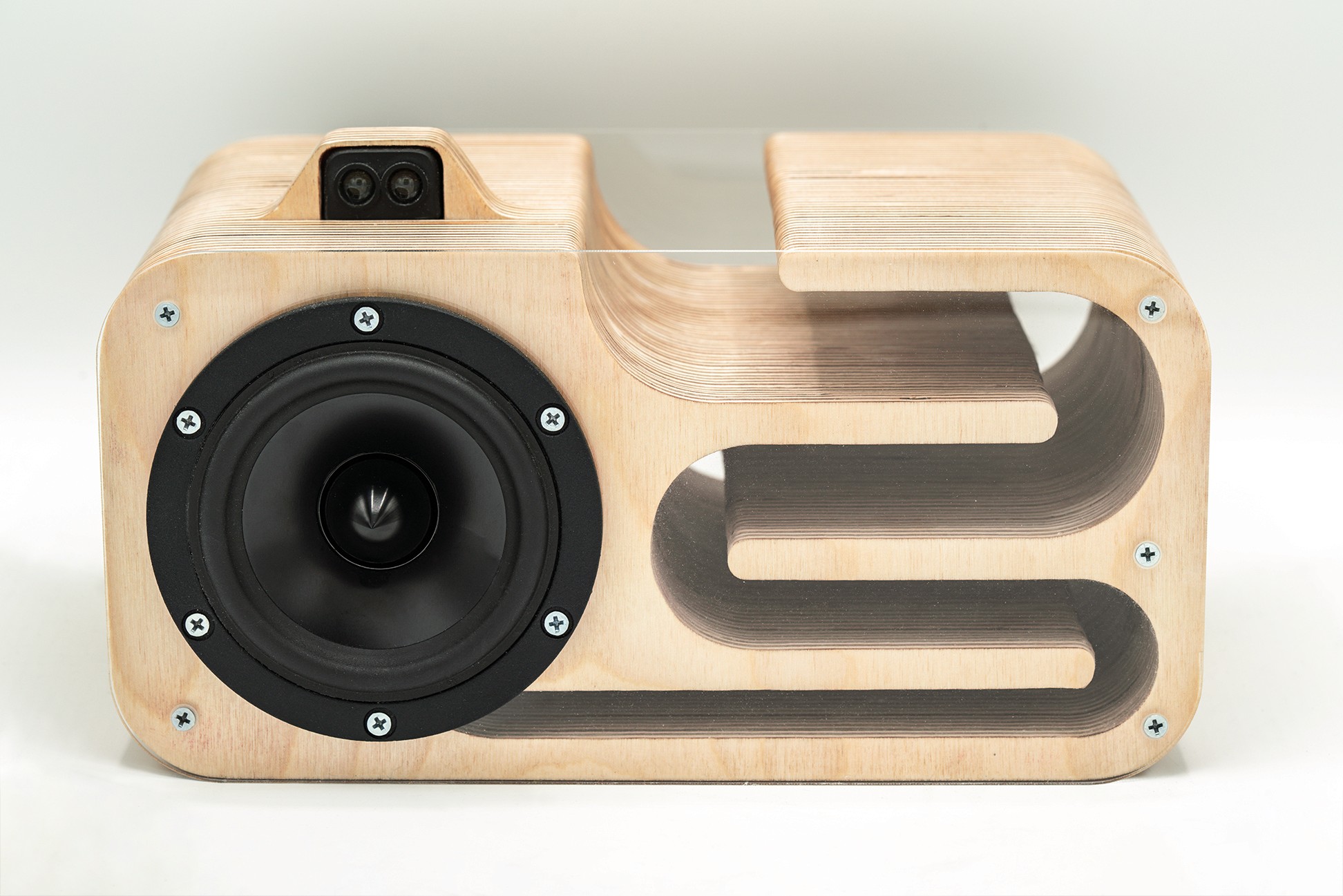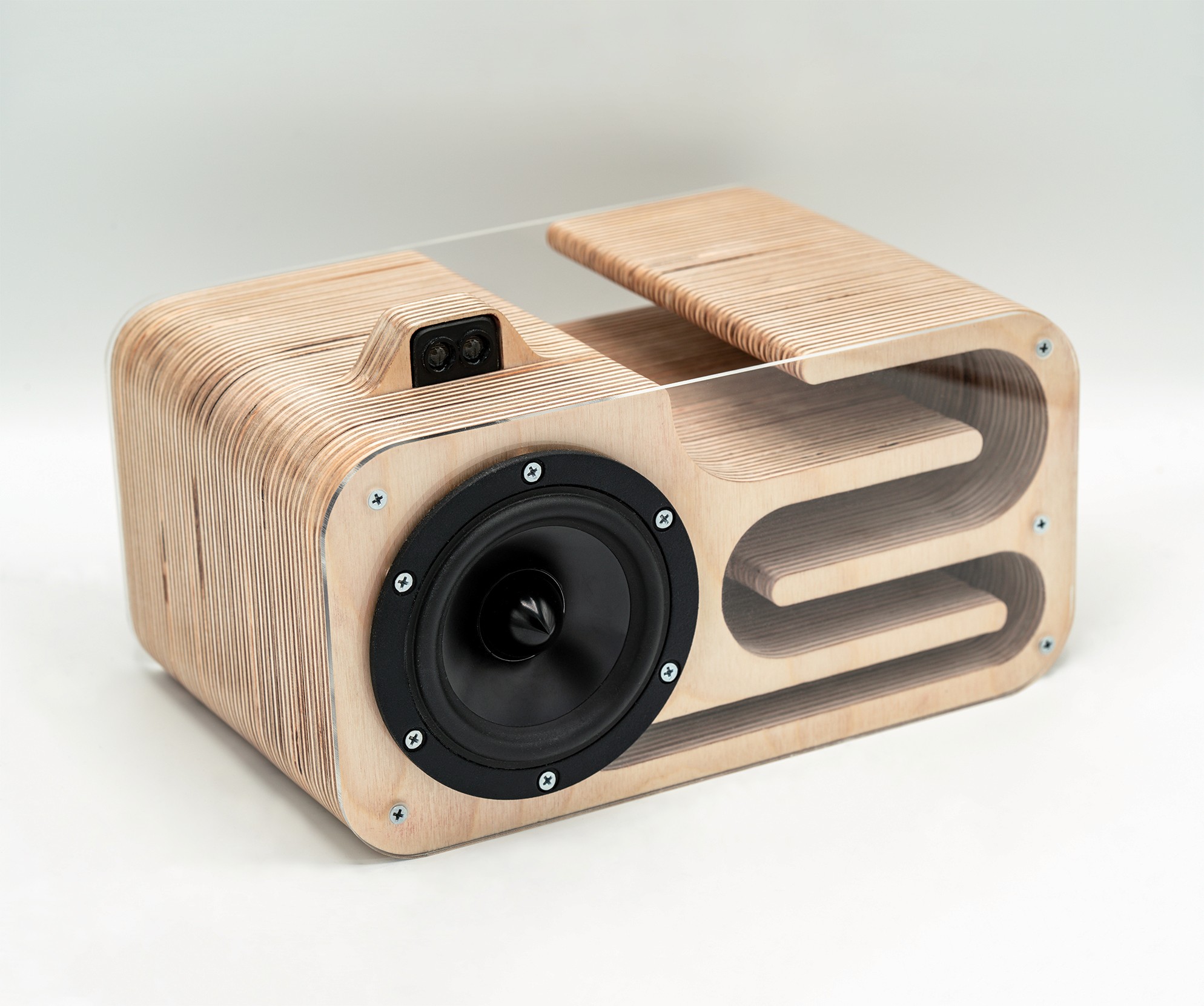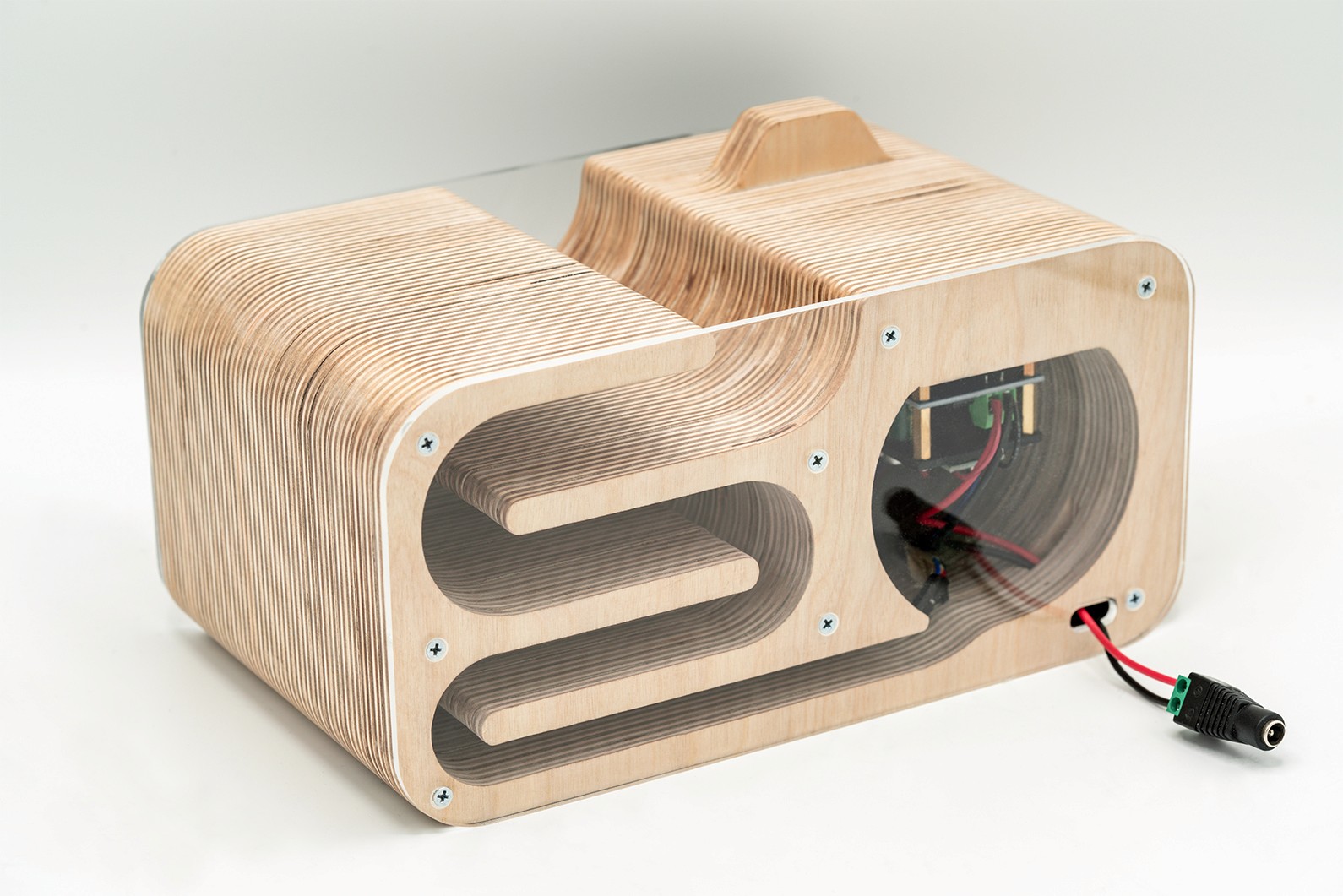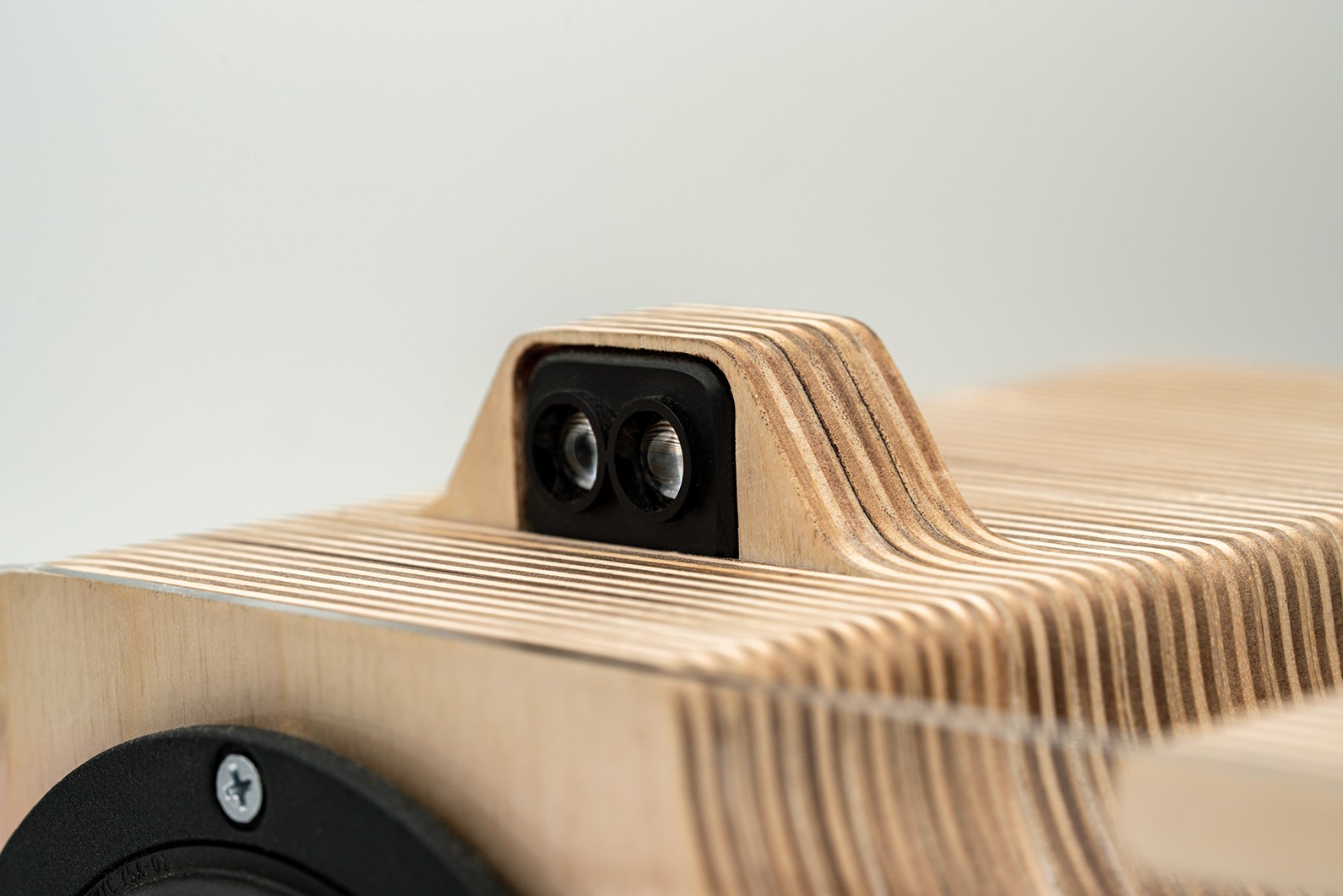Ampli-Pi
Ampli-Pi
INDUSTRIAL DESIGN
Ampli-Pi is a smart speaker that dynamically adjusts the volume based on your distance, so that no matter where you are in the room, the music is always at the right volume.
Chris Chong – Design, Electronics,
Software & Fabrication
Akshay Ram – Software
Cathy Zhao – Project Management
& Experiments
Ampli-Pi is a smart speaker that dynamically adjusts the volume based on your distance, so that no matter where you are in the room, the music is always at the right volume.
Chris Chong – Design, Electronics,
Software & Fabrication
Akshay Ram – Software
Cathy Zhao – Project Management
& Experiments
Ampli-Pi is a smart speaker that dynamically adjusts the volume based on your distance, so that no matter where you are in the room, the music is always at the right volume.
Chris Chong – Design, Electronics,
Software & Fabrication
Akshay Ram – Software
Cathy Zhao – Project Management
& Experiments
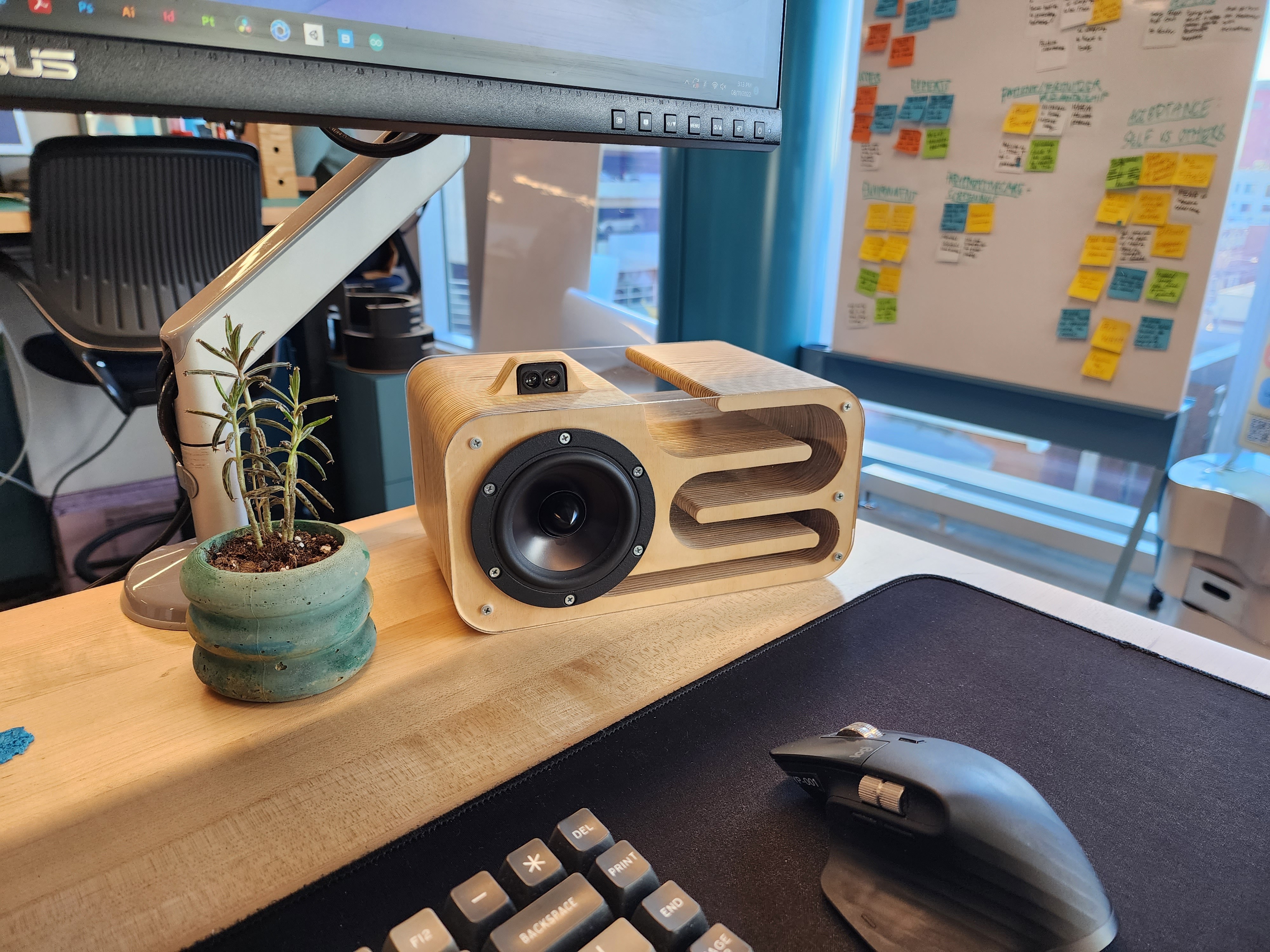
PROBLEM STATEMENT
Smart speakers have become widely adopted across U.S. homes. We rely on these speakers for music, podcasts, and weather forecasts. However, current speakers require manual commands or physical buttons to adjust the volume. Misunderstood and unnecessary commands (or worse, repetitive ones) creates a suboptimal user experience.
Smart speakers have become widely adopted across U.S. homes. We rely on these speakers for music, podcasts, and weather forecasts. However, current speakers require manual commands or physical buttons to adjust the volume. Misunderstood and unnecessary commands (or worse, repetitive ones) creates a suboptimal user experience.

OPPORTUNITY
We propose a smart speaker which automatically adjusts the volume according to its distance from the user (increasing the volume the further the user is and decreasing the volume the closer the user is), thereby maintaining the same perceived volume for the user without the need for manual input.
We propose a smart speaker which automatically adjusts the volume according to its distance from the user (increasing the volume the further the user is and decreasing the volume the closer the user is), thereby maintaining the same perceived volume for the user without the need for manual input.
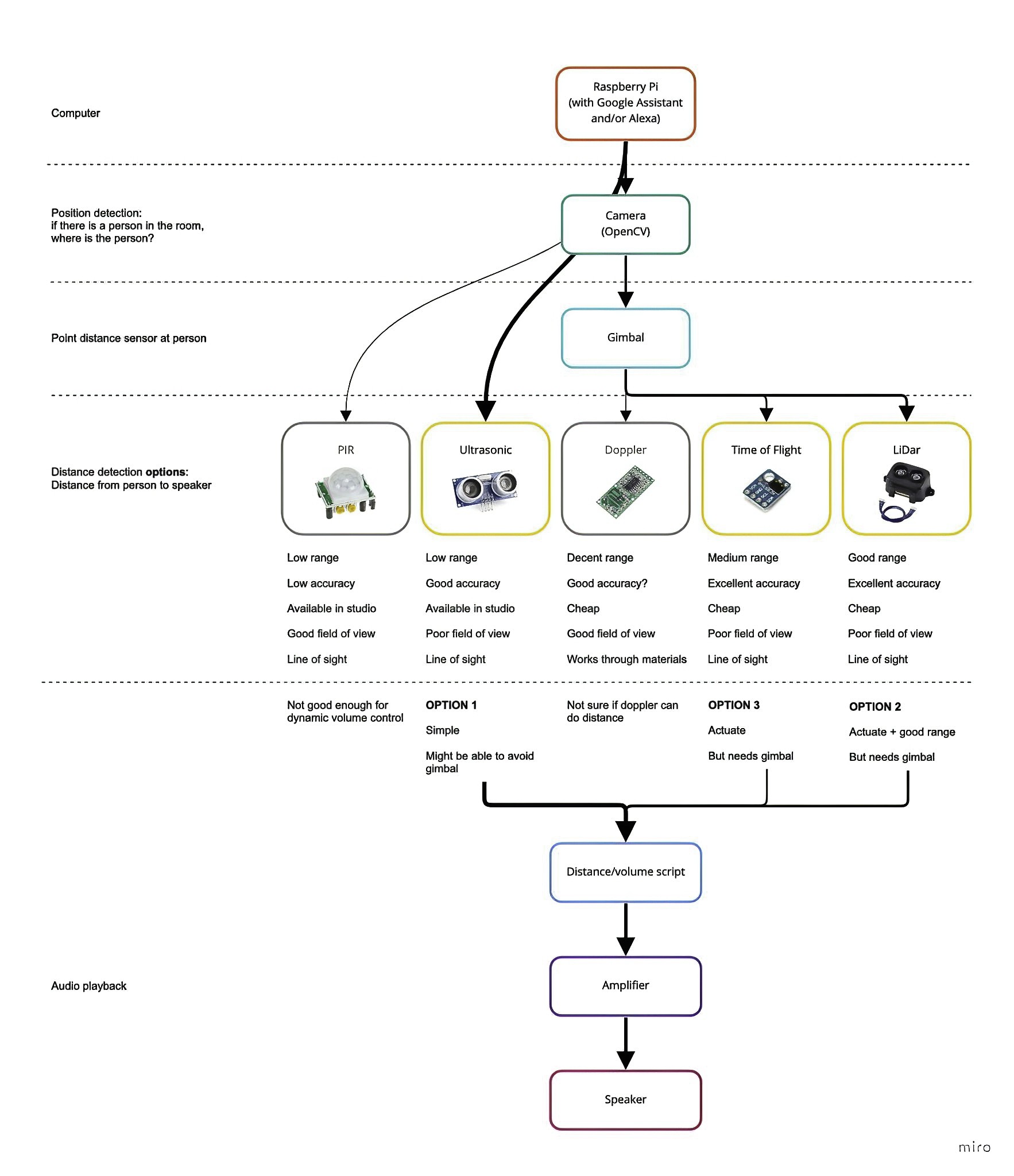


FEASIBILITY STUDY
We made a block diagram outlining different sensor and component options as an initial feasibility study.
Due to the functionality we were aiming to achieve, the device would be powered from a Raspberry Pi 4 in order to do distance sensing, music playback and volume adjustment all in one device.
EXPERIMENTS
We mocked up a number of experiments by mapping different distance sensors to the system volume of the Raspberry Pi using Python.
We quickly realized that the range required for the idea to work necessitated using a LiDAR Time of Flight sensor.
We mocked up a number of experiments by mapping different distance sensors to the system volume of the Raspberry Pi using Python.
We quickly realized that the range required for the idea to work necessitated using a LiDAR Time of Flight sensor.
We mocked up a number of experiments by mapping different distance sensors to the system volume of the Raspberry Pi using Python.
We quickly realized that the range required for the idea to work necessitated using a LiDAR Time of Flight sensor.
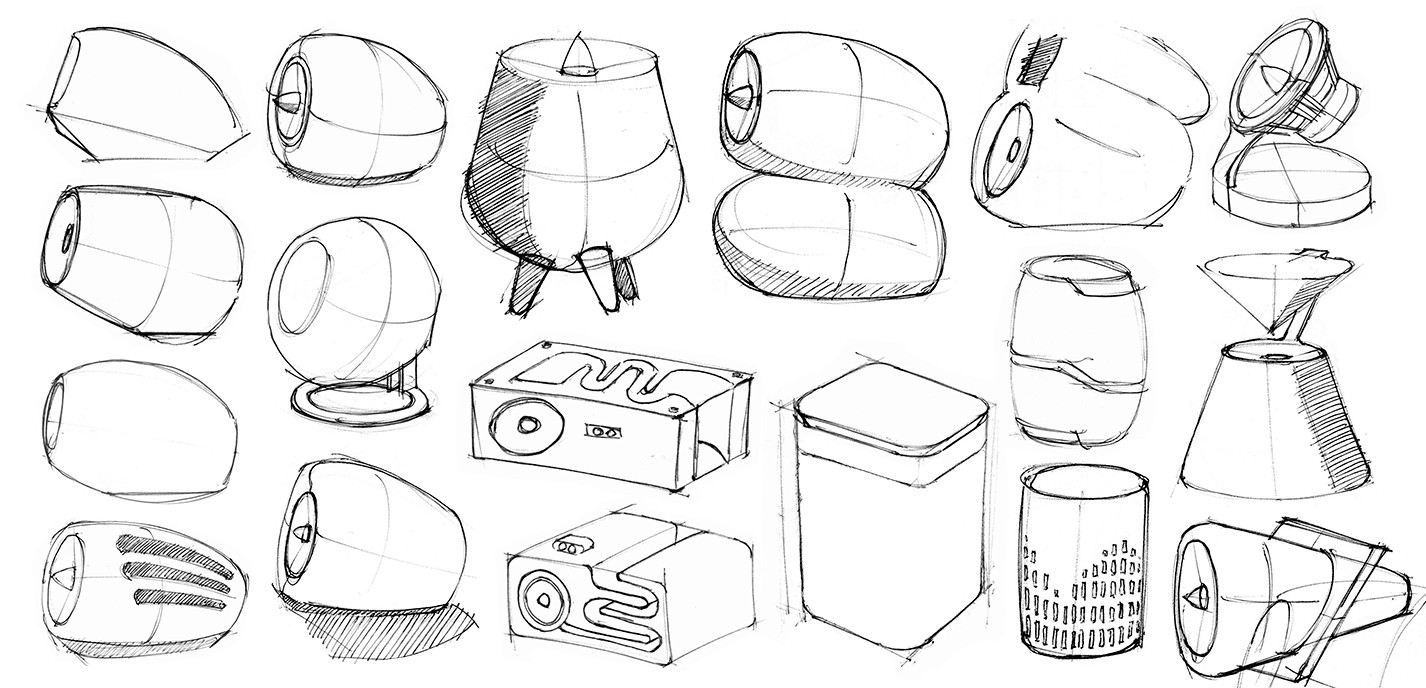
IDEATION & SKETCHES
We sketched a number of concepts based on considerations such as aesthetics, sensor position, internal components, fabrication and sound quality.
We sketched a number of concepts based on considerations such as aesthetics, sensor position, internal components, fabrication and sound quality.
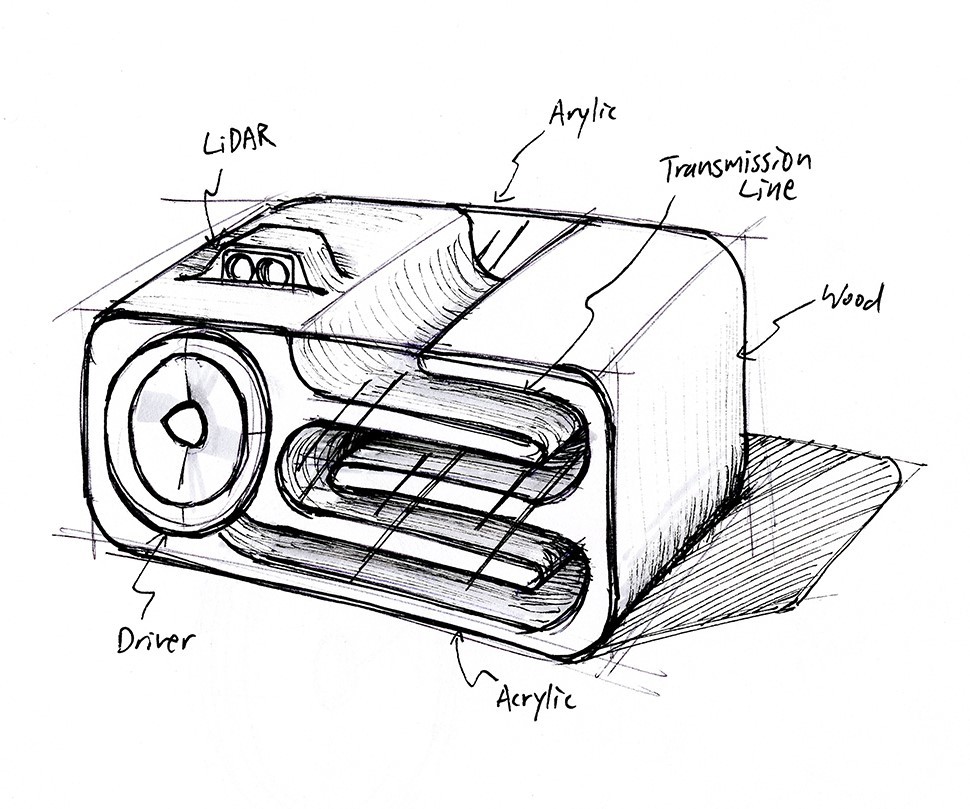
DESIGN
We decided to use a housing design made up of layers of plywood, sandwiched on both sides using two sheets of acrylic.
This design showcases the weaving form of the transmission line, which is designed to capture and amplify low-frequencies behind the speaker. Combined with the treble and mid-range coming directly from the speaker driver, this design produces a louder, in-phase bass response, for a fuller and richer sound.
We decided to use a housing design made up of layers of plywood, sandwiched on both sides using two sheets of acrylic.
This design showcases the weaving form of the transmission line, which is designed to capture and amplify low-frequencies behind the speaker. Combined with the treble and mid-range coming directly from the speaker driver, this design produces a louder, in-phase bass response, for a fuller and richer sound.
We decided to use a housing design made up of layers of plywood, sandwiched on both sides using two sheets of acrylic.
This design showcases the weaving form of the transmission line, which is designed to capture and amplify low-frequencies behind the speaker. Combined with the treble and mid-range coming directly from the speaker driver, this design produces a louder, in-phase bass response, for a fuller and richer sound.
Full-range driver
Digital to analogue converter
Raspberry Pi 4
Laminated plywood housing
Acrylic faceplate
LiDAR time of flight sensor
60W amplifier
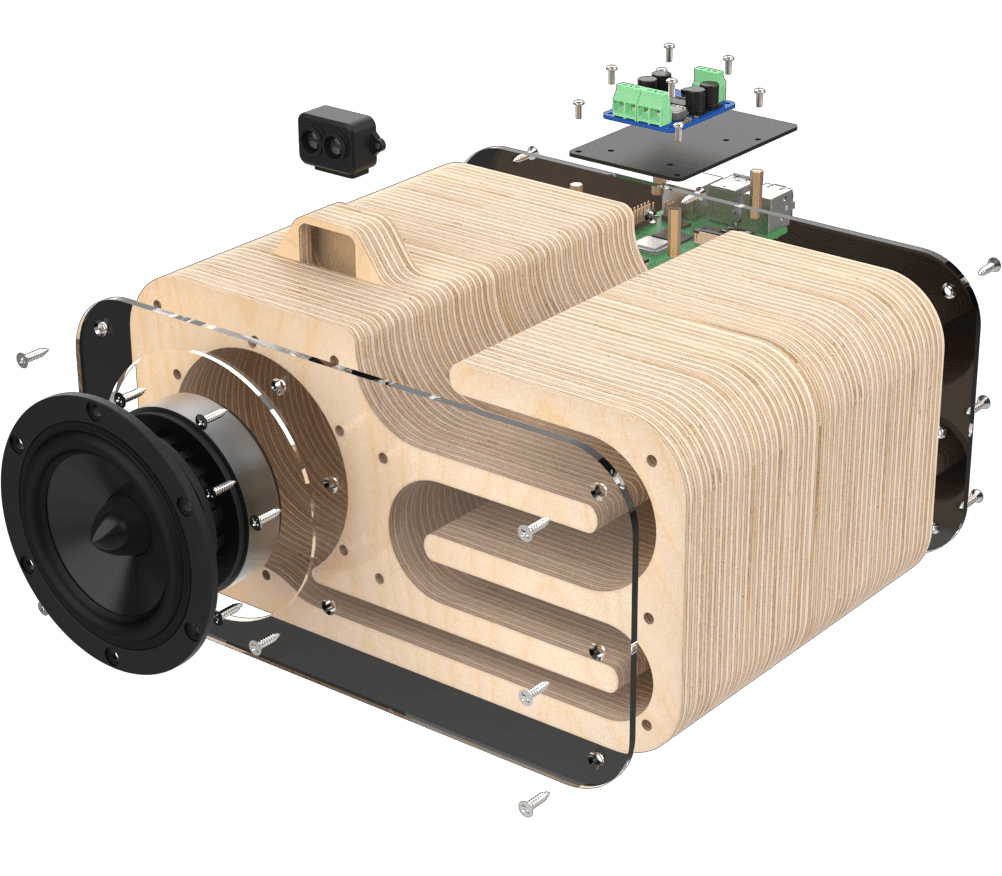

FABRICATION
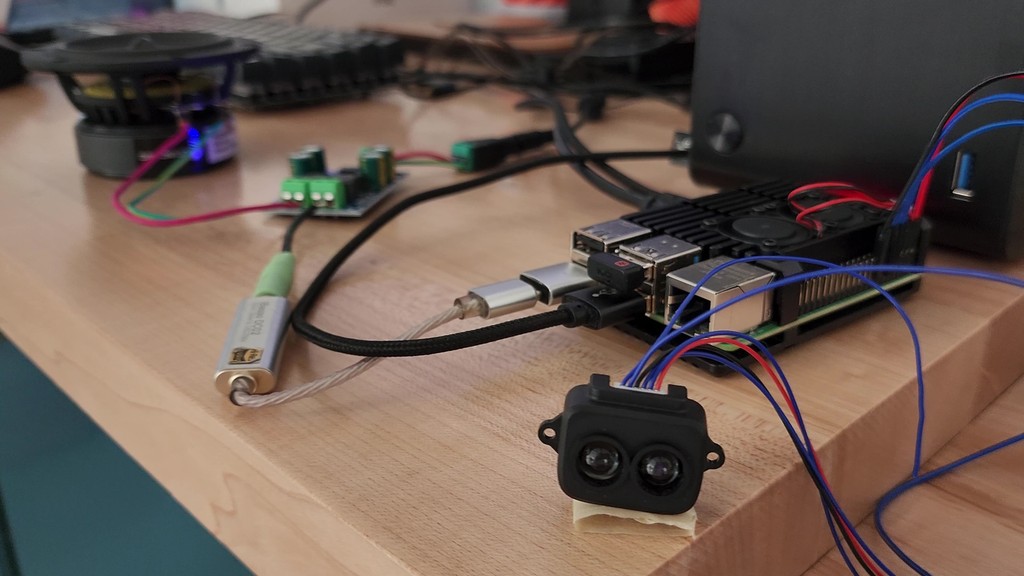
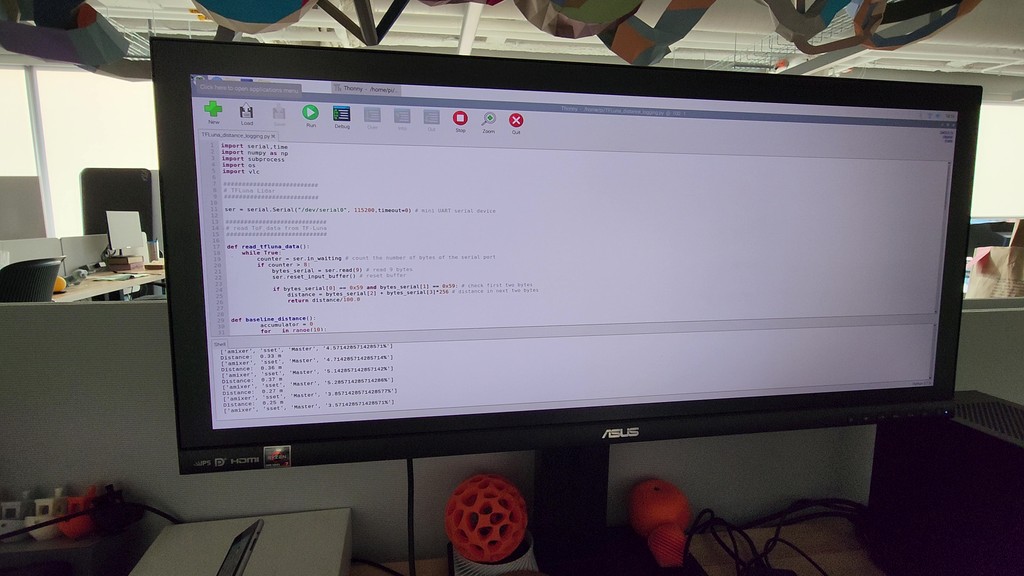
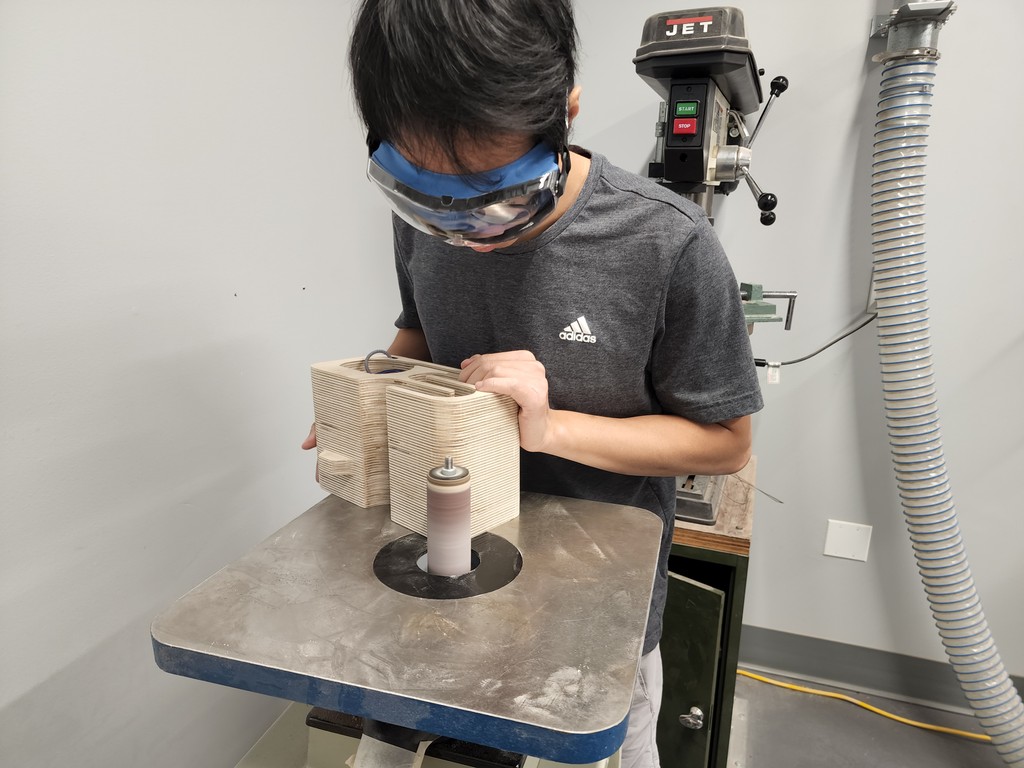
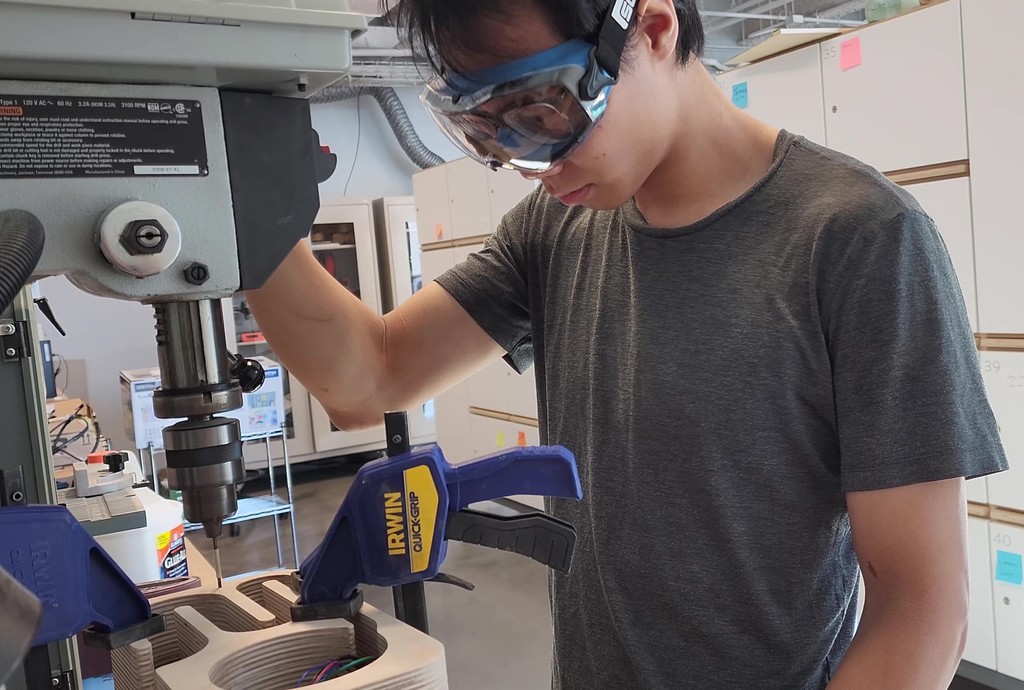
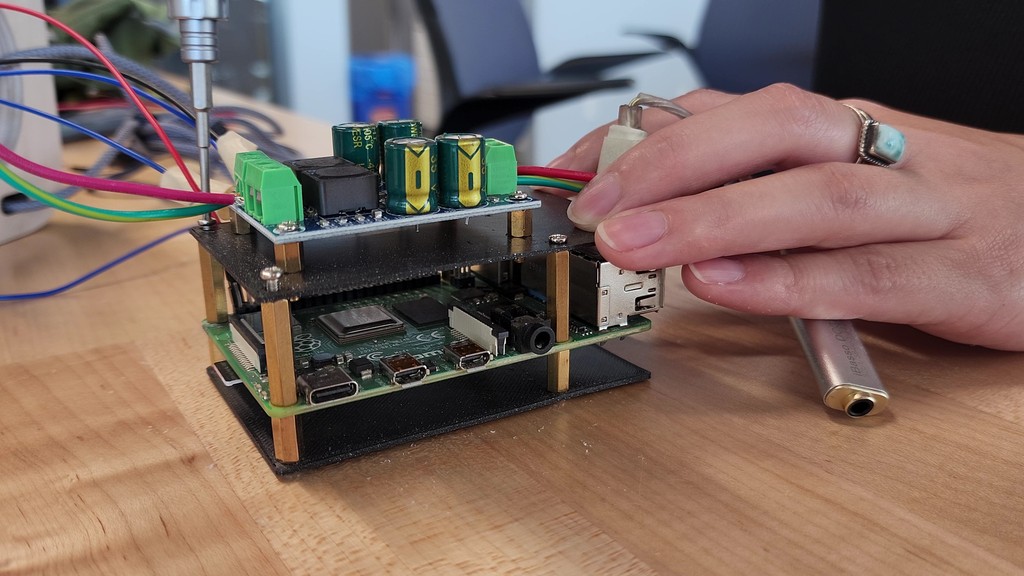


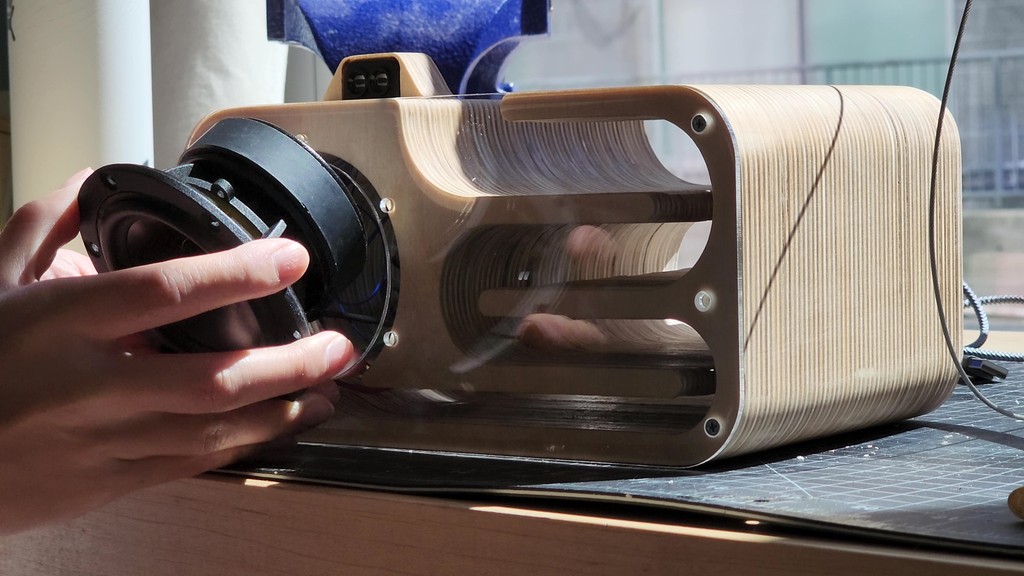
FULLY FUNCTIONAL VOLUME ADJUSTING SPEAKER
